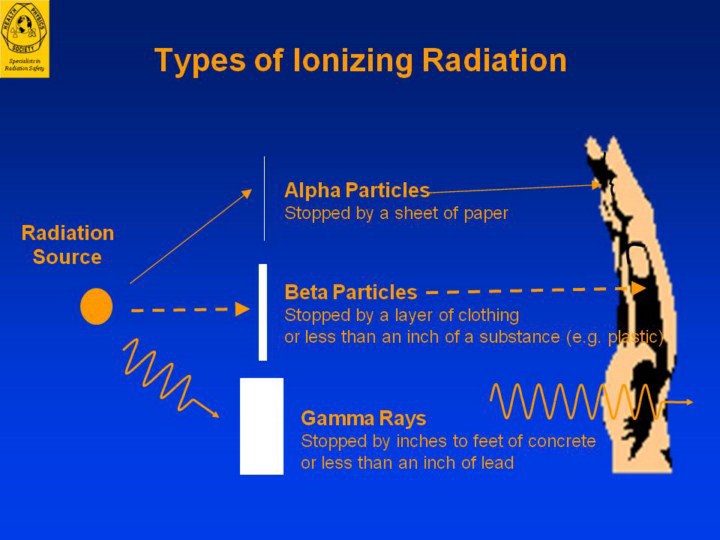| front |1 |2 |3 |4 |5 |6 |7 |8 |9 |10 |11 |12 |13 |14 |15 |16 |17 |18 |19 |20 |21 |22 |23 |24 |25 |26 |27 |28 |29 |30 |31 |32 |33 |34 |35 |36 |37 |38 |39 |40 |41 |42 |43 |review |
 |
Types of Ionizing Radiation
•
Alpha particles.
Alpha particles are ejected (thrown out of) the nuclei of some very
heavy radioactive atoms (atomic number > 83). An alpha particle is
composed of two neutrons and two protons. Alpha particles do not
penetrate the dead layer of skin and can be stopped by a thin layer of
paper or clothing. If an alpha emitting radioactive material gets inside
the body through inhalation, ingestion, or through a wound, the emitted
alpha particles can cause ionization that results in damage to tissue.
It is less likely that a patient would be contaminated with an alpha
emitter.
•Beta
particles.
A beta particle is an electron ejected from the nucleus of a radioactive
atom. Depending on its energy, beta radiation can travel from inches to
many feet in air and is only moderately penetrating in other materials.
Some beta radiation can penetrate human skin to the layer where new skin
cells are produced. If high enough quantities of beta emitting
contaminants are allowed to remain on the skin for a prolonged period of
time, they may cause skin injury. Beta emitting contaminants may be
harmful if deposited internally. Protective clothing (e.g., universal
precautions) typically provides sufficient protection against most
external beta radiation.
•Gamma
rays and x-rays (photons).
Gamma rays and x-rays are able to travel many feet in air and many
inches in human tissue. They readily penetrate most materials and are
sometimes called “penetrating” radiation. Thick layers of dense
materials are needed to shield against gamma radiation. Protective
clothing provides little shielding from gamma and x radiation, but will
prevent contamination of the skin with the gamma emitting radioactive
material. Gamma and x radiation frequently accompanies the emission of
beta and alpha radiation.
|